🎬 The Thin Red Line (1998): The Human Side of War
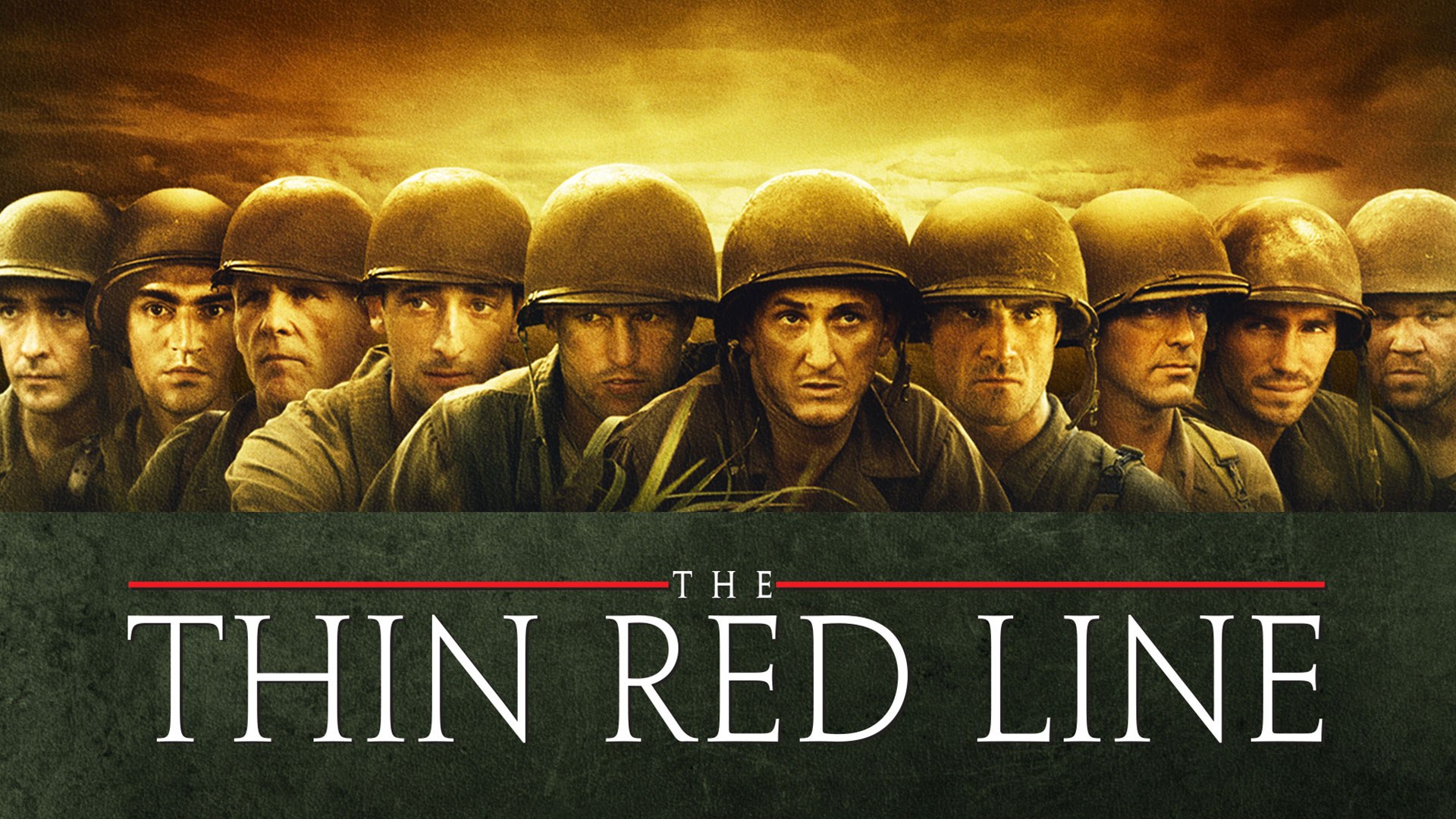
Director: Terrence Malick
Main Cast:
- Sean Penn as Sgt. Edward Welsh
- Jim Caviezel as Pvt. Robert Witt
- Nick Nolte as Lt. Col. Gordon Tall
- Elias Koteas as Capt. James Staros
- Adrien Brody as Cpl. Fife
- John Cusack as Capt. John Gaff
Plot Overview:
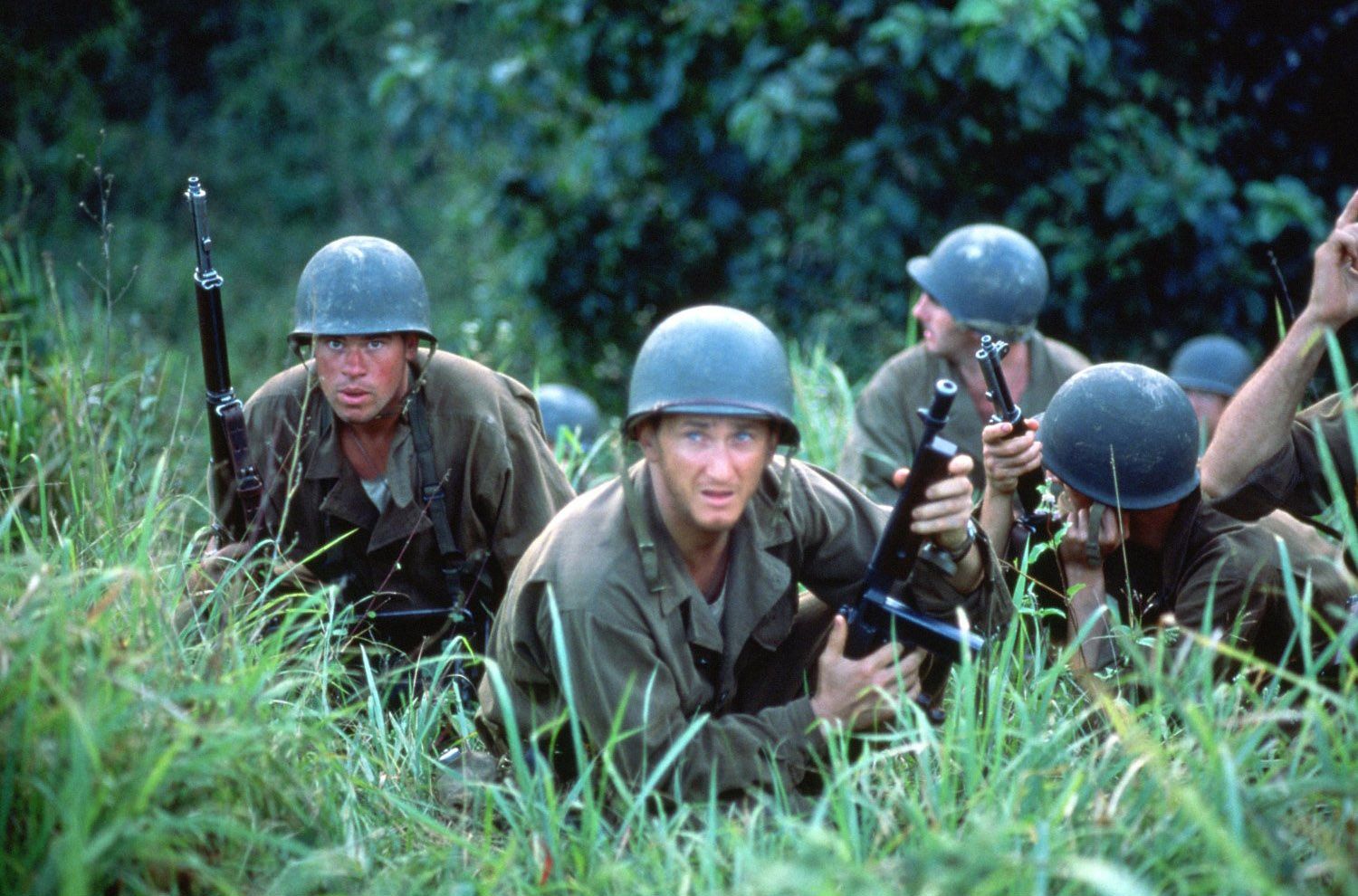
The Thin Red Line is a meditative and haunting exploration of the human condition set against the backdrop of the Battle of Guadalcanal during World War II. Directed by the enigmatic Terrence Malick, this war drama offers a unique perspective on the chaos of battle and the inner struggles of the soldiers fighting in it. Rather than focusing solely on the action, the film delves deep into the psychological and emotional turmoil of the men, revealing their fears, hopes, and existential reflections. The sprawling ensemble cast and poetic narration make The Thin Red Line a deeply philosophical examination of war’s effect on the soul.
What to Expect from The Thin Red Line
- A Philosophical Approach to War:
- Unlike most war films that focus on combat and strategy, The Thin Red Line takes a more introspective approach, exploring the internal lives of its characters. It grapples with profound questions about life, death, nature, and the meaning of existence, making it as much a meditation on humanity as it is a war film.
- Visually Stunning Cinematography:
- Terrence Malick is known for his ability to capture nature’s beauty, and The Thin Red Line is no exception. Expect sweeping shots of the lush Pacific islands juxtaposed with the brutality of warfare. The contrast between serene landscapes and violent conflict underscores the film’s central themes of life’s fragility and the destructiveness of war.
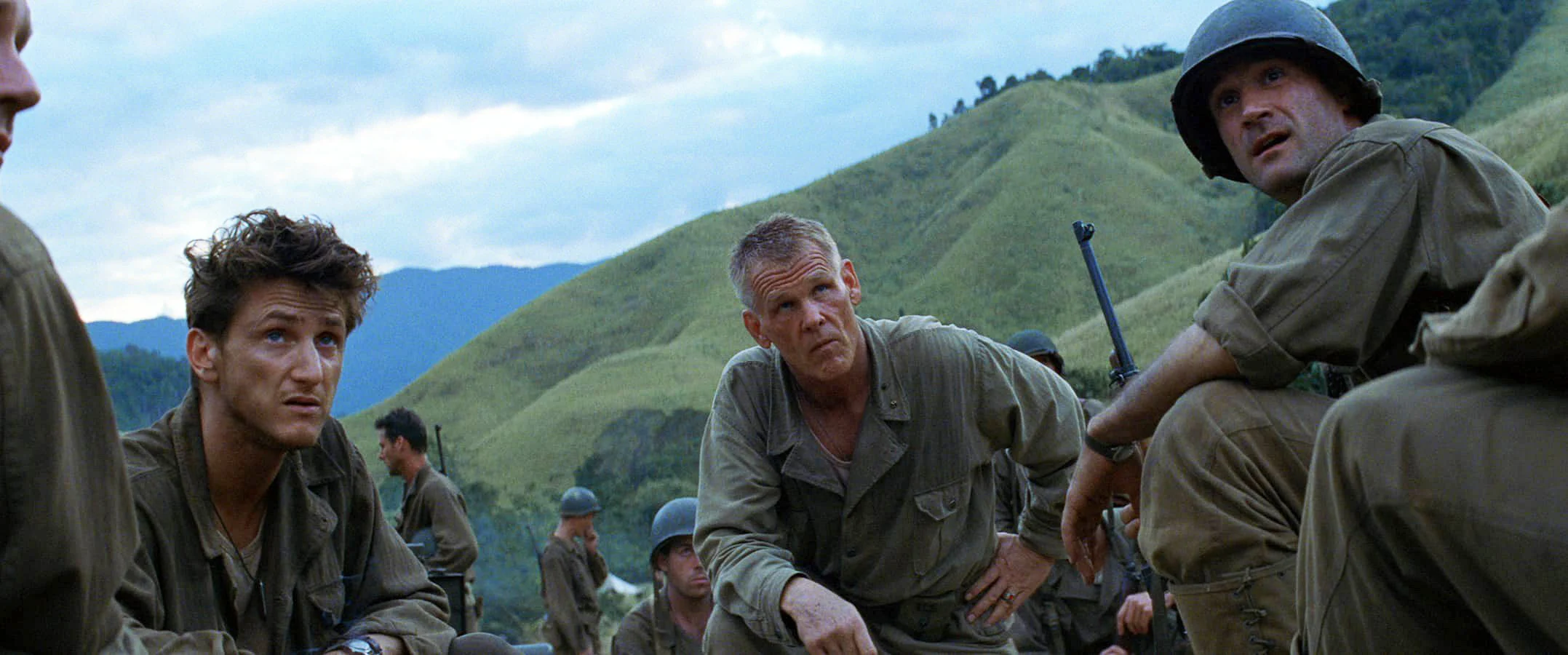
- Complex Characters:
- The film boasts an ensemble cast, each portraying soldiers with unique personalities and perspectives. Expect to see men grappling with their roles in the war, from the hardened and cynical Sgt. Welsh (Sean Penn) to the introspective Pvt. Witt (Jim Caviezel), who searches for meaning beyond the battlefield.
- A Slow, Reflective Pace:
- The Thin Red Line moves at a deliberate pace, offering long stretches of silence, voiceover narration, and reflection. The film’s emphasis is on the psychological and emotional impact of war rather than the fast-paced action typical of the genre. Expect moments of quiet contemplation punctuated by bursts of intense combat.
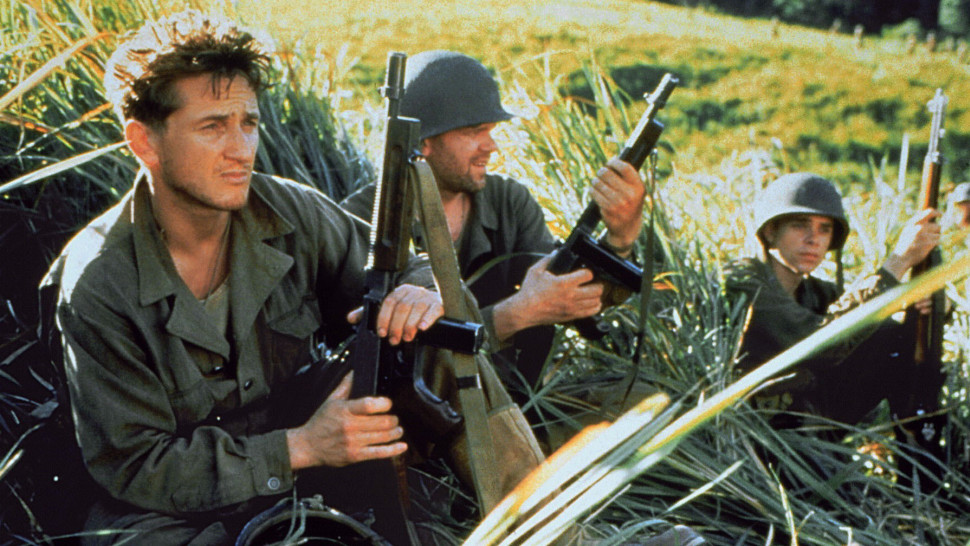
- Poetic Voiceovers:
- One of the most distinctive features of the film is its use of voiceover narration. Various characters reflect on their experiences and inner thoughts, giving the film a dreamlike quality that feels more like a philosophical meditation than a traditional narrative. These voiceovers offer profound insights into the nature of war and humanity.
- The Horror and Beauty of War:
- The Thin Red Line portrays war not only as horrific and dehumanizing but also as strangely beautiful in its portrayal of human resilience, nature, and the complex emotions that arise in the face of death. Expect the film to challenge your perception of war by juxtaposing its horror with moments of quiet beauty.
Cinematic Techniques
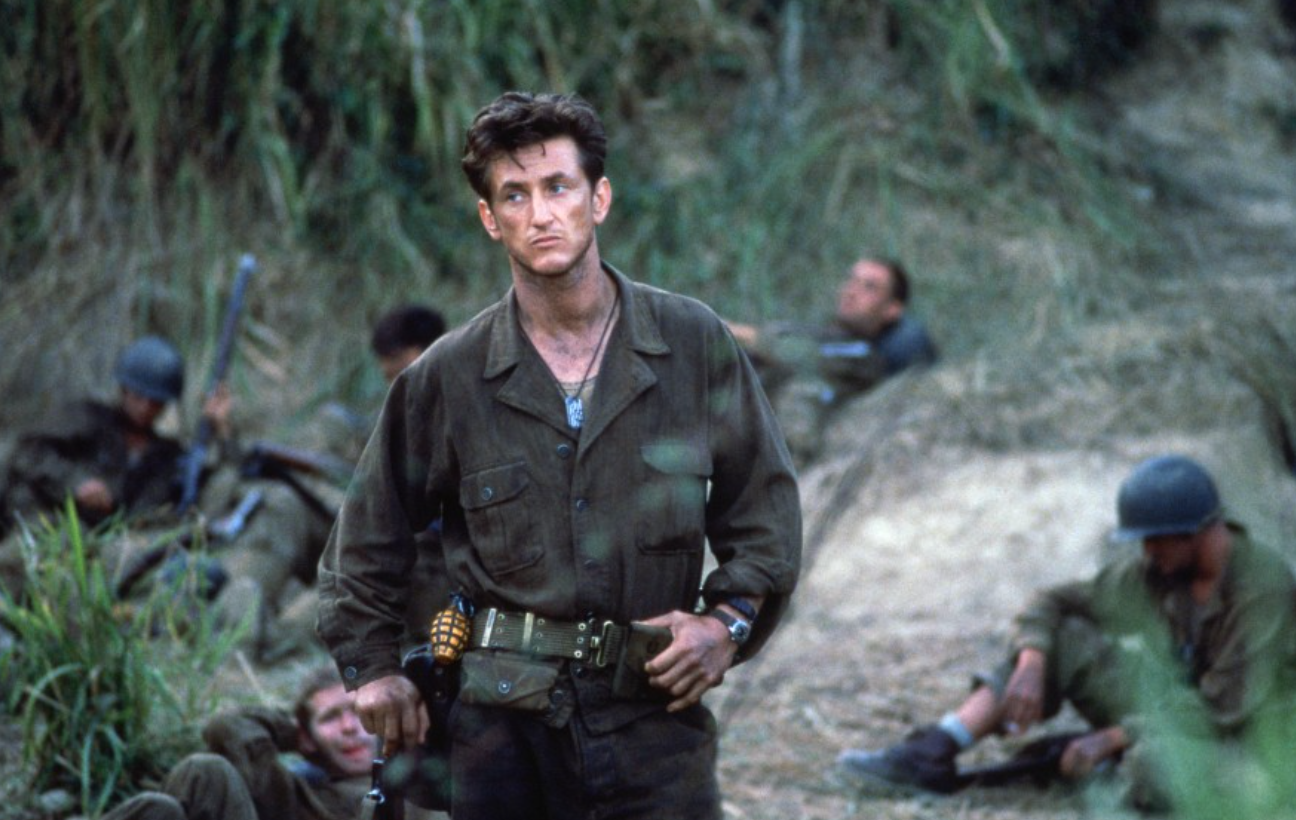
- Naturalistic Cinematography:
- Malick’s use of natural light and real locations gives the film an organic, almost ethereal quality. Expect long, lingering shots of nature, including flowing rivers, swaying grass, and the jungle, which are as much characters in the film as the soldiers themselves. These visuals serve to remind the audience of the indifference of nature to human suffering.
- Nonlinear Narrative:
- The film’s structure is not straightforward, weaving in and out of different soldiers’ experiences. This fragmented narrative reflects the chaos of war and the fragmented nature of human thought. It encourages viewers to engage actively with the film as they piece together the emotional and psychological states of the characters.
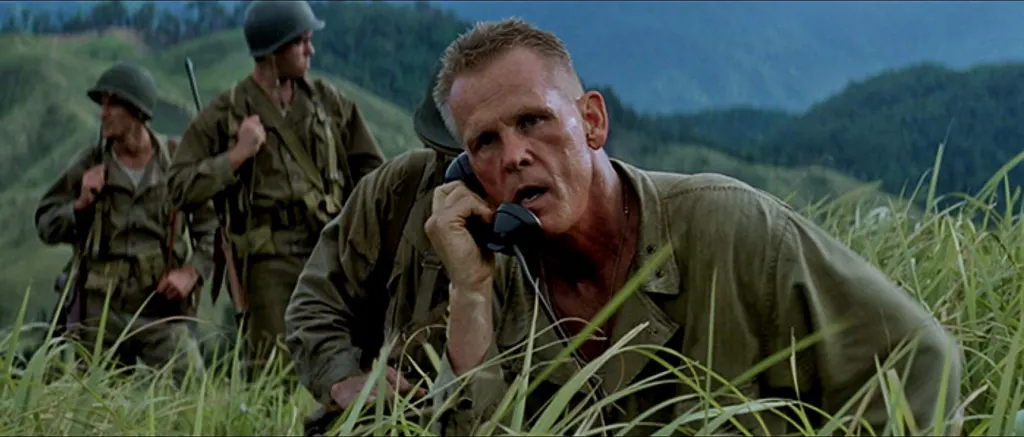
- Minimal Use of Music:
- The sparse and haunting score by Hans Zimmer is used sparingly, allowing the natural sounds of the environment and the quiet moments of reflection to take center stage. The music that does appear underscores the film’s emotional depth, heightening the sense of both beauty and despair.
Legacy and Impact
The Thin Red Line is often regarded as one of the most thought-provoking war films ever made. Released the same year as Saving Private Ryan, it was overshadowed by Steven Spielberg’s more action-oriented take on World War II but has since gained a dedicated following for its unique approach. While it didn’t perform as strongly at the box office, it received critical acclaim and was nominated for seven Academy Awards, including Best Picture and Best Director.
The film has left a lasting impact on the war genre, influencing how filmmakers approach the subject matter, often blending the visual and the philosophical. It has also cemented Terrence Malick’s reputation as a visionary director who refuses to follow traditional storytelling norms, instead focusing on the abstract, the internal, and the natural.
Conclusion
The Thin Red Line is not your typical war film. It offers a profound and philosophical look at the human experience amidst the chaos of battle. Through its rich characters, poetic narration, and stunning visuals, the film asks its audience to reflect on the nature of war, life, and death. For those who seek more than just action and want a war film that challenges their perceptions, The Thin Red Line is an unforgettable cinematic journey into the heart of human conflict.
Video suggestions for you:











